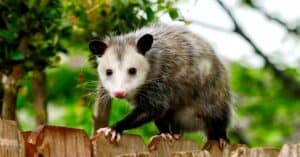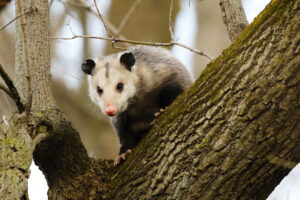The Virginia opossum is North America’s only marsupial. It is incredibly unique, as it is the only mammal on the continent that has a pouch in which it carries its young. As a result, pregnancy (gestation) is very short, and most of a baby’s development takes place inside the pouch. This means that people often will not come into contact with opossum babies until after they are old enough to leave the pouch. This can make it difficult to tell the age of the opossum. After the young opossums leave the mother’s pouch, they will stay with her and ride on her back for a month before they eventually head off on their own.
However, sometimes a baby leaves the pouch too early or falls off a mother’s back before it is old enough to be independent. When a baby opossum is separated from its mother, the mother will not come back to collect it. At this point, human intervention is often necessary to save the baby opossum. Before trying to help an opossum, however, it’s important to know if it is actually young enough to require intervention. This is where being able to gauge the age of an opossum becomes very important.
When Should You Intervene?
Before intervening with wildlife, you should always contact a licensed wildlife rehabilitator. It is illegal in most states to care for wildlife in your homes without a license. Additionally, correctly caring for wild animals, particularly opossums, requires the proper knowledge and tools to do so. Nutrition, diet, interactions, stimulus, and housing needs vary from species to species, as well as at different life stages. Without the proper training and experience, the animals do not develop well, often become ill or die, or are not equipped for life in the wild.
While most wild animals do not require help, there are cases where they may need assistance. One such scenario is when babies are orphaned or are separated from their mothers too early. If you are certain that an animal is orphaned, or find one that is too young to be on its own, intervention may be necessary.
But how can you tell if it’s old enough to be on its own? Check out the following life stages to see when an opossum requires care, and when it is independent.
1. Birth
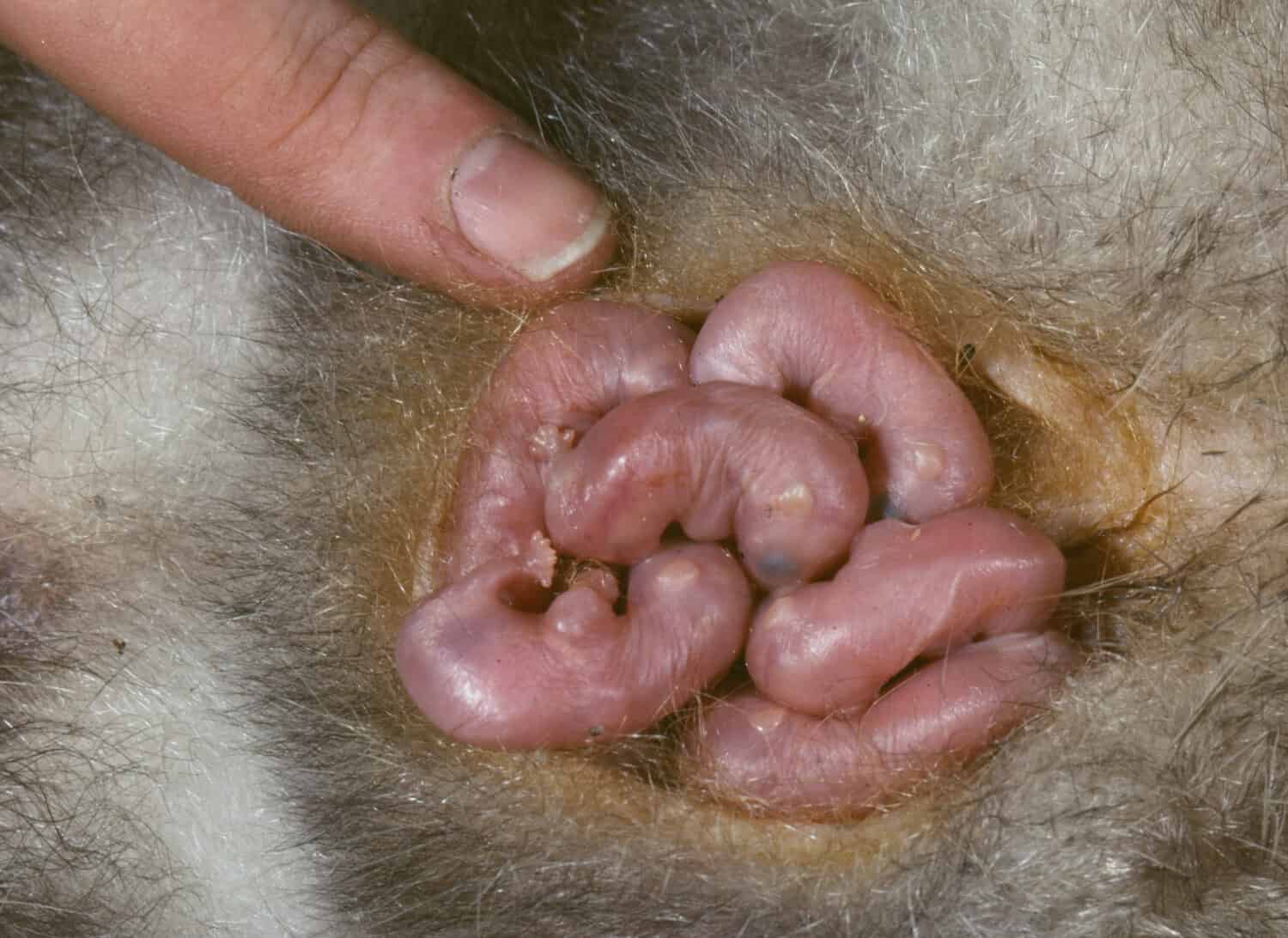
Newborn Virginia opossums weigh less than a gram at birth.
©Breck P. Kent/Shutterstock.com
Because most of a baby opossum’s development occurs in the pouch, gestation is much shorter than in other mammals. Virginia opossums are pregnant for only 10-12 days before giving birth. The babies must then crawl up the mother’s stomach to her pouch. The mother will lick her hair to part it to give the babies a clear path to the pouch, but that is all the assistance she provides. Babies must climb to the pouch within the first few minutes after birth, or they will not survive.
At birth, baby opossums are more like fetuses than babies. These embryonic-looking babies are born hairless, blind, and with their eyes sealed shut. They are only about the size of a dime. It is incredibly rare to find babies outside of the pouch at this age, and if they are, they are unlikely to survive. If you find a baby opossum that is hairless with its eyes sealed shut, it requires immediate care from a licensed rehabilitator. However, most infants at this age will not survive outside of a mother’s pouch.
2. Pouch
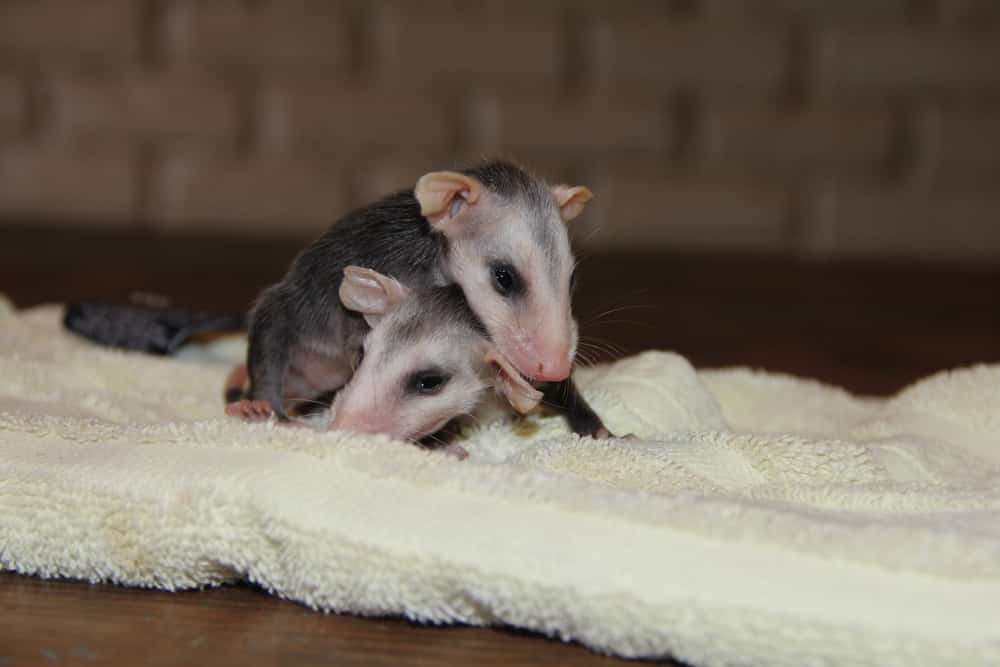
At this age in captivity, baby opossums need to have a tube run into their stomachs to eat. They cannot nurse from a bottle like other mammals.
©5Foote/Shutterstock.com
Once the babies make the journey from the birth canal to the pouch, they latch onto one of the mother’s 13 teats. After the infants latch, the teat will swell in their mouths to help them stay attached. They will remain attached to the teat for around 2.5 months. Since they don’t let go, it is critical that baby opossums latch on as quickly as possible. While an opossum can give birth to up to 20 babies, there are only 13 teats. After just one week of suckling, the babies will triple in size, and their weight will increase tenfold.
During the months they are in the pouch, the babies begin to develop fur. Their eyes begin opening at around 55-70 days old when they are about the size of a mouse. As the babies grow bigger, the mother will look bloated and pregnant. However, her actual pregnancy is long over; she just has a pouch full of growing babies.
3. Back
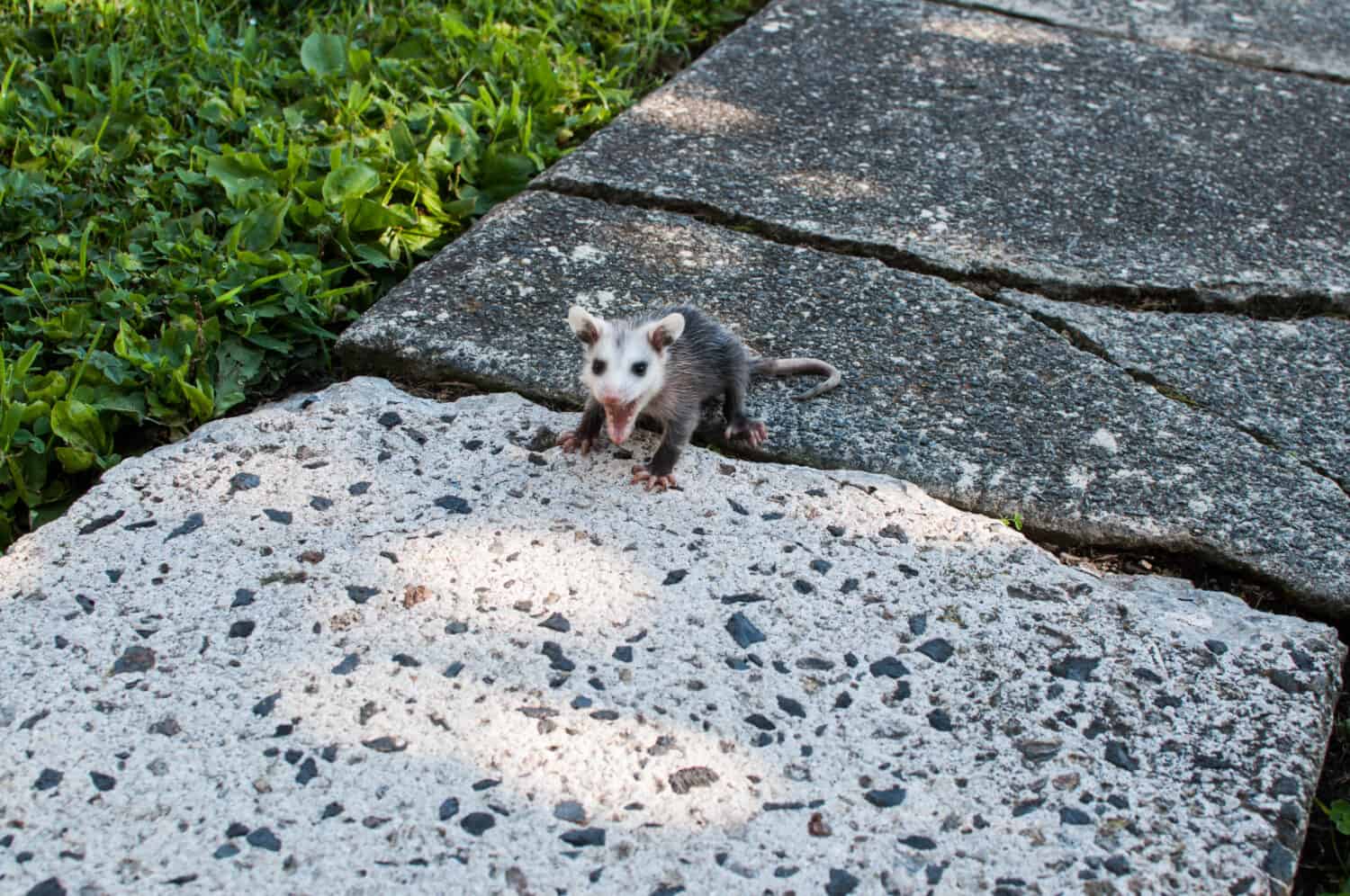
Opossums at an age where their fur is still mostly dark and flat are too young to be separated from their mother.
©Barbara MacDonald/Shutterstock.com
At approximately 2 months old, the babies become too big for the pouch. They start to leave it for short periods to cling to the mother’s back as she forages for food. At this age, the baby is around 3-4 inches long, not including the tail. Its eyes are fully open, and its fur is dark and smooth. Most baby opossums found that require intervention are at this age, as they can easily fall off of the mother’s back if she is startled or threatened. Again, once they are left behind, the mother will not return for them.
4. Weaned
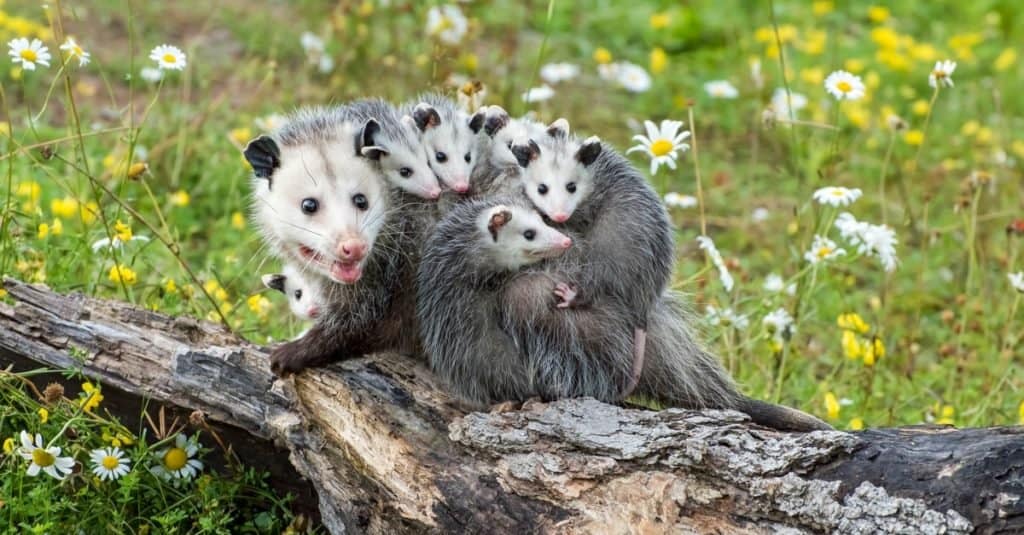
Baby opossums have opposable thumbs that allow them to cling tightly to their mother’s back.
©Evelyn D. Harrison/Shutterstock.com
Babies still return to the pouch to nurse until they are approximately 3 months old. At around this age, they are weaned. They continue to travel on their mother’s back and very rarely return to the pouch after weaning. Three-month-old opossums have longer white or light grey fur mixed in with dark grey and are approximately 5-6 inches long. A baby opossum at this age may require intervention, as they are still learning survival skills from their mother.
5. Independent

Opossums are nocturnal animals, but it is not abnormal to see them out during the day.
©Becky Sheridan/Shutterstock.com
Virginia opossums leave their mothers at around 4-4.5 months of age. At this time, they will be alone, without other opossums. They are equipped to live in the wild on their own at this age and do not require human assistance (except in the case of injury or illness).
By the time baby opossums reach this stage and leave their mother’s back, they are around 6-8 inches. They have long, puffy grey fur, essentially looking like a miniature adult. An opossum this size that weighs over 200 grams is completely independent and does not require human intervention unless injured or ill.
6. Adult

Virginia opossums have 50 teeth—more than any other mammal.
©iStock.com/rexlis
Opossums are fully grown at around 7-8 months old. A fully mature opossum can weigh between 4-11 pounds, and be approximately 2-3 feet long (including their hairless tail). Females are smaller than males, which can reach up to 15 pounds. Their fur will be coarse, and greyish-white or greyish-brown in color. On average, opossums only live for 2 years in the wild. This means that by the time they reach maturity, their lives are almost half over. While opossums may not be long-lived, knowing when to intervene when they are young can help them live full, healthy lives in the wild.
Summary of Opossum Ages
| Age | Description |
|---|---|
| 1. Birth | Pink, embryonic-looking babies that are the size of a dime or bumblebee. |
| 2. Pouch | Fur begins to develop when they are 2-3 inches long and eyes open at 55-70 days. |
| 3. Back | 3-4 inches long, with smooth, grey hair. |
| 4. Weaned | Babies are 5-6 inches long with hair that is greyish-white and puffy. |
| 5. Independent | 6-8 inches long and 200+ grams with greyish-white puffy hair. |
| 6. Adult | Fully grown at 7-8 months, can be 4-11 pounds on average. |
The photo featured at the top of this post is © Holly Kuchera/Shutterstock.com
Thank you for reading! Have some feedback for us? Contact the AZ Animals editorial team.




